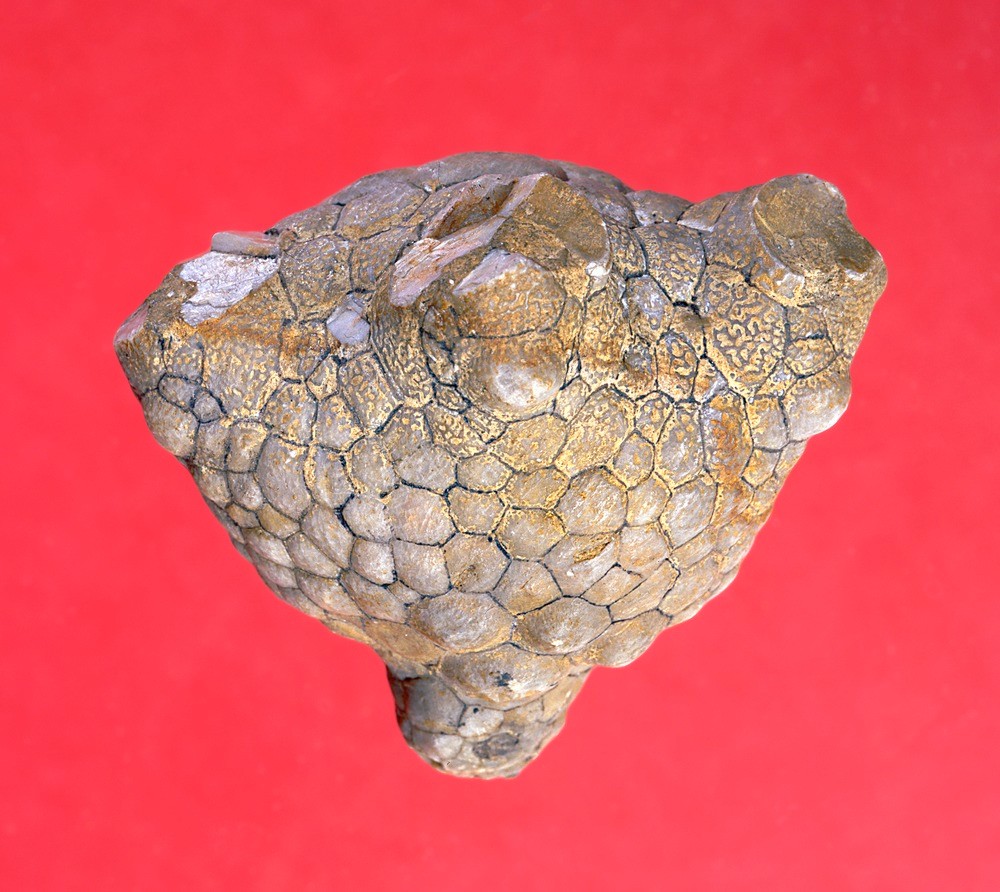| P number: | P549503 |
|---|---|
| Caption: | Amphoracrinus portlocki, a fossil crinoid. |
| Description: | Amphoracrinus lived during the Carboniferous times, between about 300 and 350 million years ago. It has been found in many parts of the world, from Europe to Africa, Asia and North America. The cup (or 'calyx'), which is attached to the top of a stem, is up to about 5 cm. across. Amphoracrinus portlocki has a conical cup made up of a large number of polygonal calcite plates. The plates in many crinoids can be divided into five groups, but Amphoracrinus appears to have six. This is because an elongate anal tube, which is also protected by a series of plates, extends from the top of the cup. Crinoids are an ancient group of animals that first appeared during the Cambrian times, over 500 million years ago, and can still be found living today. The animal lived in a cup-like structure ('calyx') made of numerous calcite plates. It had many arms ('brachials'), which waved in the sea water above the animal to collect food. The calyx of most crinoids is attached to a long flexible stem, made of a stack of calcite plates ('columnals'), that was anchored to the sea bed, sometimes by a holdfast. |
| Photographer: | Unknown |
| Copyright statement: | NERC |
| Orientation: | Landscape |
| Size: | 473.18 KB; 1000 x 892 pixels; 85 x 76 mm (print at 300 DPI); 265 x 236 mm (screen at 96 DPI); |
| Average Rating: | Not yet rated |
| Categories: | Best of BGS Images/ Fossils |
Reviews
There is currently no feedback

